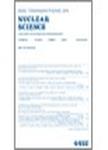版权所有:内蒙古大学图书馆 技术提供:维普资讯• 智图
内蒙古自治区呼和浩特市赛罕区大学西街235号 邮编: 010021

作者机构:Univ Texas MD Anderson Canc Ctr Houston TX 77030 USA
出 版 物:《IEEE TRANSACTIONS ON NUCLEAR SCIENCE》 (IEEE Trans Nucl Sci)
年 卷 期:2003年第50卷第5期
页 面:1386-1391页
核心收录:
学科分类:0808[工学-电气工程] 08[工学] 0827[工学-核科学与技术]
基 金:Cobb Endowment for Cancer Research J.S. Dunn Research Foundation Texas Higher Education Advanced Technology U.S. Army Breast Cancer National Institutes of Health, NIH, (ROI CA58980, ROI CA61880, ROI CA76246, ROI EB001038, ROI EB00217)
主 题:coincidence circuits digital signal processor positron emission tomography (PET) programmable logic array
摘 要:A high-resolution oncologic transformable positron emission tomography (HOTPET) is currently under development. The detector ring of the camera consists of 12 detector modules. Because the high-yield-pile-up-event-recovery (HYPER) front-end electronics are applied in this new-generation PET camera, a low-dead-time coincidence circuitry is needed to take advantage of the improved efficiency from this technology. The coincidence matching of events coming from different detector modules is performed by an AND-logic on the arriving edges of the module output timing pulses. A flexible modular architecture has been adopted to facilitate the use of the coincidence circuitry for different detector module configurations in addition to different electronic and mechanical implementations. The application of backplane/plug-in architecture and programmable devices (EPLD/FPGA) along with a digital signal processor (DSP) provide reprogrammable flexibility and expandability, allowing scans ranging from animal and breast PET to whole-body PET. There are 42 possible combinations of module pairs derived from the maximum 12 detector modules in coincidence with seven opposite modules. Both the accidental and total (true + accidental) coincidences are simultaneously collected in real time;the accidental timing shift is greater than or equal to200 ns relative to true events. The timing-gate window for the coincidence AND-logic can be dynamically, digitally adjusted during data acquisition between 6.5 and 16 ns to optimize the signal-to-noise ratio in the data. The prototype circuit showed that the timing accuracy is far better than 0.5 ns and the coincidence dead-time is less than 21 ns.